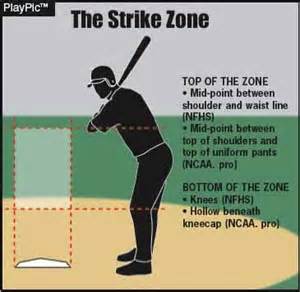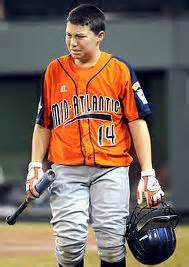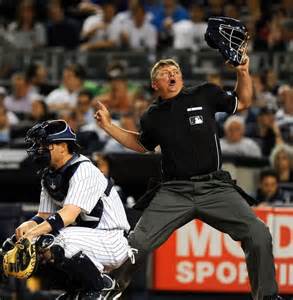Youth Baseball Catcher - Sizing Up Hitters
Being a youth baseball Catcher, whether it be youth league or professional, You are primarily responsible to always think for two players … Yourself and the Pitcher. That’s to say, You are responsible to call the game ( Pitch Selection ) and to be the honest and logical determining factor of what pitch is or Is Not working well today.

- Always Thinking
No different than 99% of us, who know we can perform whatever task at hand it happens to be, because we’ve done it before, most pitchers just aren’t capable of admitting their blazing fastball, is not blazing today. You, know by catching him whether his fastball is moving or coming in flat.
There are many strategies catchers use to call a game and many we have already discussed, but let’s review coming at the issue from a different approach and you may pick something up you missed before.
Different Methods and Theories of How to Pitch to Hitters:
Possibly the Number one Cardinal Rule is to always vary types of pitches, speeds, levels and locations of pitches on every batter, and never throw the same sequence of pitches to the hitter each time he comes up to bat.

Youth Baseball Catcher - Know It Changes
One example is, start a batter out with a fastball the first two times he bats, but start him off with a change-up or breaking ball the third time up. The intent is to keep him guessing and not setting on a particular pitch.
Should you know the batter has extreme difficulty making contact with a curve ball, give him a steady diet of curve balls. It is very important to mix in another pitch every now and then to keep the batter guessing and honest, but you never throw it for a strike.
Two strike count on curve balls, call a fastball off the plate out of the strike zone. Chances are he’ll swing at it because he’ll be so glad to see a fastball instead of a curve coming at him. If he doesn’t swing because it’s a ball or he’s totally surprised, come back with a curve ball, preferably down.

Youth Baseball Catcher - Totally Fooled
If possible, try and determine if the batter is a read-and-react hitter, a hitter who tries to adjust to the variance of every pitch; or is the type who looks for certain pitches and location, especially in specific counts.
*** For instance, if you notice one of the opposition’s best hitters Never swings at a curve ball on a 2-2 count, chances are he’s always looking for a fastball on this count, which makes him vulnerable to other types of pitches or a fastball throw far out of the strike zone. Knowing this ahead of time can come in real handy in a crunch situation.
*** In younger levels when a pitcher only throws fastballs, it’s important to constantly change location and height of the pitch. Not that at that level the pitcher will consistently hit the target, but you and he both are learning the Principles of Good Pitching Strategy.
Going Right At A Hitter: Youth Baseball Catcher
This approach abandons the concept of strategy and out thinking the hitter, and focuses on outmatching the opponent. This approach is often used when a team is in a “Do or Die” situation, such as bases loaded and the winning run is at third.

In nearly all cases the pitcher throws fastballs, with little concern, at least until two strikes, of location. Although a very aggressive approach, it can be very effective and there are situations that demand the method.
In essence the Pitcher is saying“ Here’s my best fastball … see if you can hit it.”
Carefully Pitching to the Hitter: Youth Baseball Catcher
This method is also known as “pitching around a hitter” and “letting the Hitter get Himself out” and is an Intentional …Non-Intentional Walk.
What I mean by this is, there are certain game situations, such as a runner on second and two outs, where with first base open, you’re not going to throw a good hitter a ball to hit. You don’t want to intentional walk him, but if you do, so what … you have a force out at all bases.
It’s very important you give your pitcher a huge target to aim for, by shifting your entire body, not just moving your catcher’s mitt. The targets should nibble the corners of the plate and possibly vary in height, but nothing should cross the middle of the plate.
Like I said if you walk him, so what and if he hit’s a feeble ground ball off the end of the bat…well, just that much better.

Youth Baseball Catcher - Score / Count / Inning ... All Affects The Next Pitch
Analyzing Different Counts: Youth Baseball Catcher
There are ten or twenty times a game the situation will dictate how you plan on pitching a particular hitter, but sometimes the Count will require you to change your strategy mid-bat.
For instance, there are two out, man on second and a so-so hitter coming to bat. You’re not about to let a singles hitter drive in a run with the number 9 hitter coming up next, so you decide to pitch him carefully and hope he gets himself out.
You call two sliders in a row, because you know the batter has a hard time hitting a slider, but they are both wide for balls. The batter almost offered at both pitches although they were clearly balls, your instinct is to continue throwing sliders.
Then you notice the team’s Best hitter, who had not played due to a stomach virus, is now in the on deck circle preparing to pinch hit. This guy is the bane of your team and seems to be hitting 1000% against your pitchers. You suddenly have a real dilemma to solve.

You can continue to call sliders because you’re very confident the batter can not hit your pitcher’s slider.
( That being your choice, call time out and talk to your pitcher reminding him he must start throwing strikes )
You can challenge the batter with a fastball in order to get a strike, or call a change-up hoping for a blooper off the end of the bat. Most team’s only have an automatic “Take“ on a 3-0 count, but this coach may be different, try to remember past experiences like this. If this team does take on 2-0, especially at the bottom of the order, call a fastball down the middle.
This is why trying to remember everything you can about every team and every hitter is so important. You never know when one scrap of what you thought was insignificant information at the time, can now loom large.
You should not be alone in performing this task. Every other player on the team and especially the coaches should also be doing this, but don’t ever count on someone else. Their failure then becomes yours.
Starting At the End: Youth Baseball Catcher
This method is also referred to as “Pitching Backwards” and “Reverse Pitching,” which simply means you call the game in an unconventional manner. Most pitchers, even MLB pitchers, will try and get ahead in the count by throwing fastballs. Now, they don’t throw them down the middle of the plate, but they rely on the 1 to get ahead of the count.
For this method you do the opposite. Call for a curve ball to get ahead in the count and carve the hitter up with fastballs in different locations once you’re ahead in the count. This works especially well if the pitcher has good command of his breaking balls, but can also work well when going through the batting order for the third time.

Youth Baseball Catcher - Experiment
Saving the Best for Last: Youth Baseball Catcher
This method is also known as “Saving A Pitch (es). This philosophy is only applicable for pitchers who know more than two pitches. For instance, a fastball, change-up and slider, or any other variation of pitches in his arsenal, but it must total at least 3.
You must assume that the starting pitcher will finish every game, which means hitters will face him more than one time during the game. In order to keep hitters confused, which is your number one job, as a confused hitter can not make hard contact with the ball, you only use two of the three pitches the first time through the line up.
In other words, you only call for a fastball and change-up, varying locations, the first time through the line up. The second time through the line up you begin calling for the slider, which will totally surprise the hitters and put doubt in every batter’s mind of having to contend with a third pitch.
The more times a batter sees a pitch, the more likely he is to adjust and hit it hard. MLB hitters adjust and hit 99 mph fastballs, although the human eye can barely track a ball at that speed from a side view. By changing the sequences and usages of pitches you take away the hitters’ advantage and deliver it to your pitcher.
Carving A Hitter Up: Youth Baseball Catcher
Also known as setting up a hitter, is probably the best method for consistent success in calling a call for a pitcher. Simply put … a set up pitch is designed to get a batter off balance or looking for the wrong pitch or location, so the next pitch can strike him out or cause him to feebly ground or pop out.
For example, you may call for three pitches in a row, doesn’t matter what pitch, on the Outside portion of the plate. This has the hitter thinking away, away, away and he’ll prepare for that location. For the fourth pitch you call for a fastball inside under the hitter’s hands, he’ll not be able to get around on the ball, if he swings at all.
Now you have him confused as whether the next pitch will be inside or outside. That’s when you call for a curveball away or a circle change which will alter the speed and final location of the ball.
The key to this method is convincing a hitter of a specific location or speed the ball will be, only to do the complete opposite.
Waste Pitches: Youth Baseball Catcher
There’s nothing secretive about this method. It’s nearly identical to the Set-Up pitch, except this pitch is never intended to be a strike. Most waste pitches are called with an 0-2 count, but 1-2 is also used quite often. The entire idea of this pitch is to get the batter to swing at a ball outside the strike zone.

Faith You'll Block A Ball In The Dirt
The most effective pitch for this is a breaking ball, split finger fastball or change, which breaks sharply down towards the ground at the last second.
The pitch appears to be a low strike as it approaches, but the bottom drops out with the ball ending up very low in the zone or in the dirt.
You, as a catcher are invaluable by being astute at blocking throws in the dirt, which allows a pitcher to throw a ball in the dirt with a runner on third base and less than 2 out. Without your blocking skill, a waste pitch in the dirt with a man on third is not an option.
Youth Baseball Catcher Back To Playing Catcher

New! Comments
Have your say about what you just read! Leave me a comment in the box below.